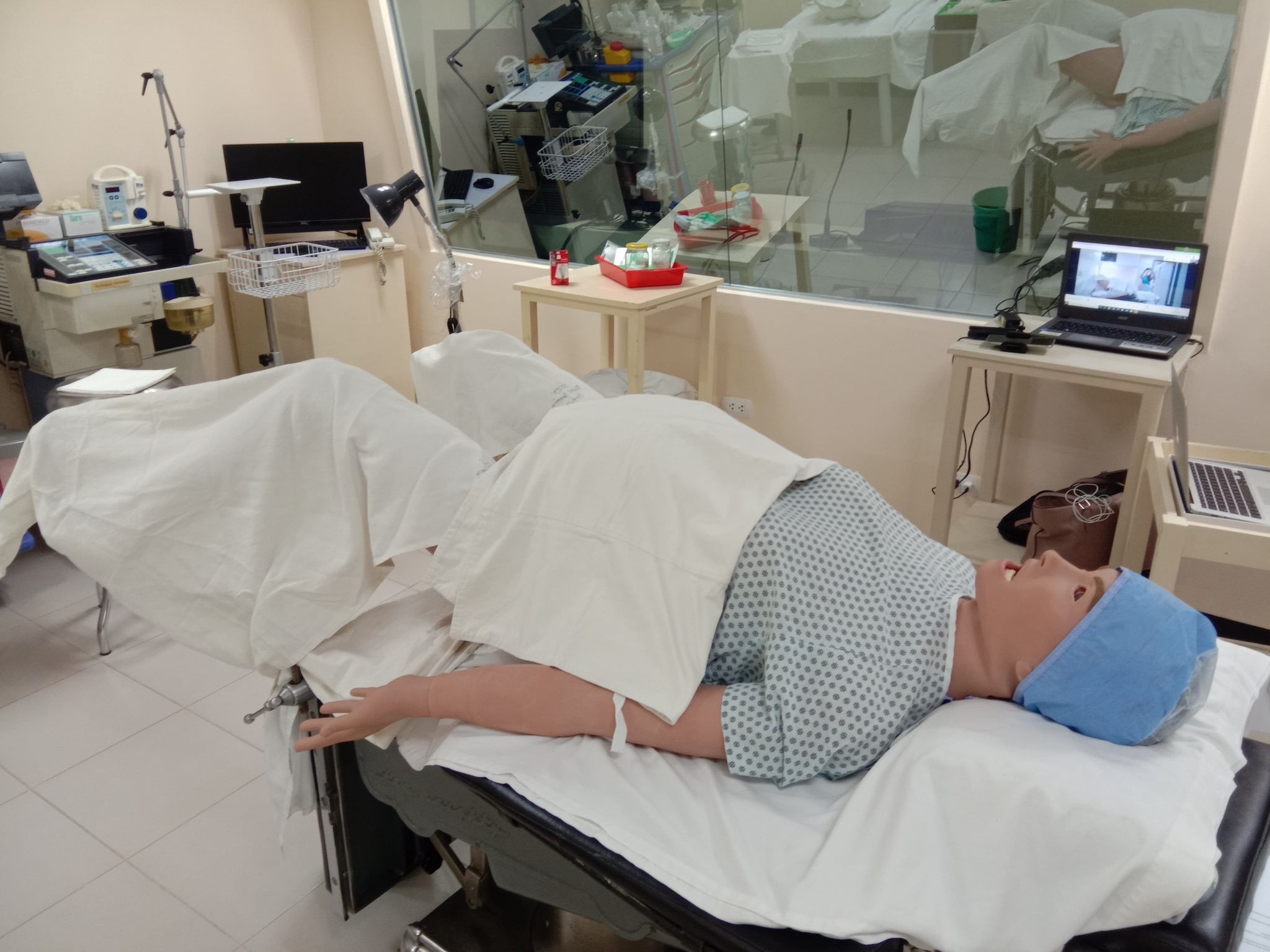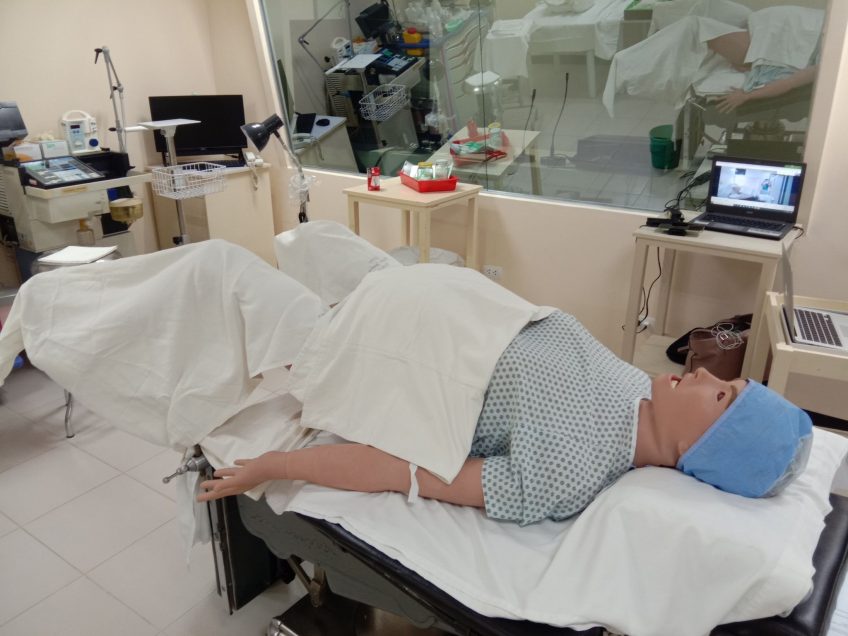
SUCN acquires birthing mannequin to simulate realistic birth
The Silliman University College of Nursing (SUCN) recently acquired a high-fidelity birthing mannequin to conduct realistic birth simulation scenarios for student nurses to be able to practice safely in a controlled environment.

The Lucina at the simulation laboratory inside the Olivia V. Yanson Building.
“With the implementation of the CMO (CHED Memorandum Order) on flexible learning, SUCN proposed the purchase of Lucina, a high-fidelity birthing mannequin to meet the delivery room skills competency development of students when actual hospital experiences are unsafe during the pandemic,” said Dr. Theresa A. Guino-o, SUCN dean.
Guino-o said the mannequin, called “Lucina,” arrived in the University last January and can be found at the simulation laboratory inside the Olivia V. Yanson Building.
“The CAE Lucina is a wireless childbirth simulator that can help the SUCN faculty train our student nurses on all the stages of delivery including rare emergency situations that is hard to ‘practice on’ in the real-world setting,” said Dr. Freslyn Lim-Saco, SUCN Research and Simulations coordinator and faculty member.

The face of “Lucina,” a high-fidelity birthing mannequin purchased recently by the Silliman University College of Nursing (SUCN).
Lim-Saco said nursing simulation through the Lucina will help provide student nurses a “quality learning experience” in the areas of maternal and child care and management.
“Through the use of this simulator, a near-to-reality care experience will occur using a controllable birthing process and safe labor and delivery activities…Lucina allows for students’ active learning engagement in normal delivery, breech birth, shoulder dystocia, and eclampsia case scenarios facilitated by nurse faculty experts,” added Lim-Saco.
Dr. Theorose June Q. Bustillo, SUCN Program of Leadership Excellence in Nursing coordinator and faculty member, said the Lucina uses the latest teaching technology to provide a life-like delivery experience for students to practice their skills in a “convincing” and safe environment.
“A realistic simulator is an important learning tool for student nurses…Simulations are not a substitute for real experiences but most of the high-risk scenarios don’t happen very often and nursing students need the simulators to practice on. Practicing on Lucina would mean that our nursing students will be better prepared for real-life births during their clinical rotations,” said Bustillo.
Dr. Maria Theresa Belciña Jr., SUCN Graduate Studies Program coordinator and faculty member, said student nurses are guided and supported by a faculty member while they practice in a simulation and are given the chance to improve their performance in the next session without harming a real patient.

The baby of Lucina, meant to replicate a newborn baby.
“A research conducted by Dr. Theresa Guino-o et al. showed that simulation benefitted the students in developing their level of self-confidence in the care of actual patients. Moreover, the implementation of simulation design elements—objectives & information, fidelity/realism, problem-solving/complexity, student support/cues, and guided reflection/debriefing—is [found to be] generally satisfactory to excellent, and is congruent and positively correlated to the nursing student’s perceived importance of every element,” said Belciña.
While all classes in the University are still being conducted through online distance learning, Belciña said learning of actual scenarios for SUCN students is currently done through synchronous viewing of the simulator as operates.

SUCN faculty members gather around the Lucina birthing mannequin.
“An example is to allow the students to identify what is needed in terms of intervention at a specific period of the scenario,” Belciña added.
Lim-Saco said SUCN faculty are being trained to use the Lucina simulator for synchronous virtual simulations for its online classes and in preparation for the limited face-to-face classes.
Bustillo said the Lucina, a maternal fetal simulator, was developed by CAE Healthcare in partnership with maternal-fetal clinical educators in the United States and biomedical engineers in Portugal.
“(The Lucina) is not the first patient simulator at SUCN. We also have two adult patient simulators and an infant patient simulator,” said Lim-Saco.
Belciña said SUCN had its first high-fidelity human patient simulator in 2009.


SUCN faculty members host a viewing of the Lucina using a video conferencing platform. Simulation using the Lucina will be conducted in this way for online classes: students will be able to watch the simulation and provide their input.


